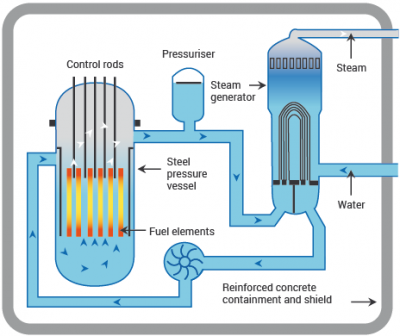
The energy that reaches the Earth in the form of sunlight is immense – more than 12,000 times greater than the world’s fuel consumption. The sunshine falling each year on the surface of America’s roads alone contains twice as much energy as all the coal and oil used every year in the entire world.
But collecting and storing this abundant supply of free energy is difficult and expensive. The Sun sheds its rays thinly over a vast area and its heat must be collected and concentrated before it can be used in homes or power plants.
In domestic hot-water systems that use the Sun’s energy, solar collectors (panels) are mounted on roofs facing the Sun. they have glass or plastic panels behind which water circulates in pipes painted black to absorb maximum heat. The heated water is then pumped into the hot-water tank.
Japan has 3 million solar panels on its roofs, and half the houses in Israel have them. They are popular in California, but cloudier Europe, which gets only half the sunshine of Israel or California, has far fewer. Only a fraction of energy collected in direct sunlight can be trapped on an overcast day.
Solar energy is also used to generate electricity. For direct uses of the Sun high temperatures are needed, and to achieve them, sunlight must be concentrated by focusing.
Mirrors, rather than lenses, are arranged in a semicircle, reflecting the sunlight towards a concrete ‘power tower’. The concentrated sunlight shines on a receiver at the top of the tower and heats a fluid which circulates through pipes. If the fluid is water, the high-pressure steam that is produced is used to drive electricity generators.
The largest power in the world is near Barstow, California, in the Mojave Desert, which has 300 days of sunshine a year. Its reflector covers 100 acres (40 hectares) and consists of 1818 mirrors in concentric circles focused on a boiler at the top of a tower that is 255ft (78m) high.
Europe’s biggest solar energy plant is in France, at Themis in the western Pyreness. Built in June 1981, it has a generating capacity of 2.5mW.
Virtually every spacecraft and satellite has depended on solar cells for its electricity since the US Satellite Vanguard in 1958. Solar cells exploit the discovery, made in 1887 by the German physicist Heinrich Hertz, that certain substances generate electricity when exposed to light-the photo-voltaic effect.
Cells are made from a thin layer of silicon placed next to an even thinner layer of silicon impregnated with boron, which alters the electrical behaviour of the silicon. Light falling on the outer layer causes electrons to migrate into the silicon backing, creating a voltage between the two layers. A series of cells must be connected together so their output adds up to a usable amount. Although silicon is cheap – it is the basic constituent of sand and rock – converting it into the single crystals necessary for solar cells is expensive. And huge numbers of cells are usually needed.
The Solar Challenger, an aeroplane powered by 16,128 solar cells generating 2.5kW, crossed the English Channel in 1981. Solar cars carry batteries, but only to store solar energy for use when it is cloudy or when the car is climbing hills.
Everyday applications of solar energy, like solar-powered watches and calculators, are widespread. Solar-heated swimming pools are becoming popular.
The first solar-cell power station of significant size – with an output of 1mW – was completed near Victorville, California, in 1982. One of the largest solar-cell projects in Europe is on the island of Pellworm, off the West German coast, where 17,500 solar cells covering an area as big as two football pitches provide the electricity for the island’s health spa.
Picture Credit : Google










